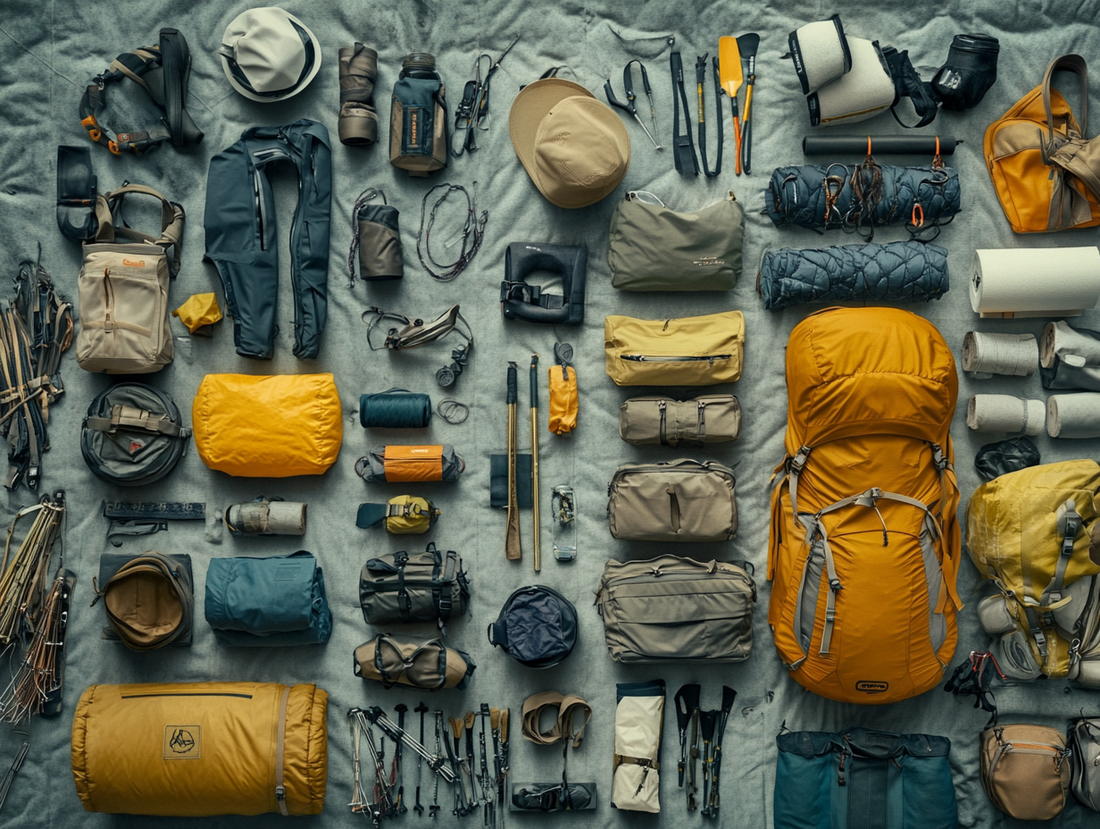
Outdoor Gear Essentials: How to Choose the Perfect Boots, Poles, and Packs for Any Terrain
Share
When you’re heading outdoors for an adventure, the gear you choose can make or break your experience. Whether you’re tackling rocky mountain trails, navigating muddy forests, or simply enjoying a peaceful walk in the park, having the right boots, trekking poles, and backpacks is crucial. In this guide, we’ll explore how to choose the perfect outdoor gear — boots, poles, and packs — to ensure comfort, performance, and safety across any terrain.
1. Hiking Boots: Comfort, Support, and Durability
Your hiking boots are the foundation of your outdoor gear. They provide support, protection, and comfort during long treks, so choosing the right pair is essential. But with so many different types of boots available, how do you know which one is right for you?
Types of Hiking Boots
-
Day Hiking Boots: Light, comfortable, and great for shorter trails with moderate terrain. Look for features like cushioning, breathability, and water resistance.
-
Backpacking Boots: Designed for long trips with heavier loads. These boots provide extra ankle support and are built to endure rough terrain for days on end.
-
Mountaineering Boots: Built for extreme conditions, these boots are designed for high-altitude trekking, ice climbing, and snowy conditions. They offer stiff soles and maximum insulation.
Key Features to Consider
-
Fit: A snug fit around the heel and midfoot with room for your toes to move is key. Remember to try on boots later in the day when your feet are slightly swollen.
-
Waterproofing: If you plan on trekking through wet conditions, look for waterproof boots like those featuring Gore-Tex.
-
Outsole: A deep tread will give you the best grip on uneven or slippery surfaces.
2. Trekking Poles: Stability and Reduced Strain
Trekking poles are not just for expert hikers—they’re a game changer for anyone walking on uneven terrain. They help distribute your weight more evenly, improve balance, and reduce the impact on your joints.
Types of Trekking Poles
-
Adjustable Poles: Great for versatility, adjustable poles allow you to change the length of the pole based on terrain or incline. Look for locking mechanisms that are easy to use but secure.
-
Fixed-Length Poles: Ideal for hikers who know exactly what their preferred length is and don’t plan on adjusting their poles often.
-
Shock-Absorbing Poles: These poles come with built-in shock absorption to help reduce strain on your knees during downhill treks.
Key Features to Consider
-
Grip: Look for grips made from cork, foam, or rubber. Cork is breathable and comfortable in hot weather, while foam can absorb moisture, and rubber is durable in cold climates.
-
Pole Material: Aluminium poles are durable and affordable, while carbon fibber poles are lighter but more expensive.
-
Weight: Lightweight poles are better for reducing fatigue, but if durability is your top priority, heavier poles may be a better choice.
3. Backpacks: Carrying Your Gear Efficiently
A good backpack is just as crucial as your boots and poles. The right pack helps you carry your essentials comfortably and efficiently. Here’s how to pick the best one for your needs:
Types of Hiking Backpacks
-
Daypacks: Lightweight, compact, and perfect for short hikes or daily excursions. Usually, they have a capacity of 20-30 litres and are designed for minimal gear.
-
Backpacking Packs: Larger, heavier, and designed to carry more gear for longer trips. These packs often have a capacity of 40 litres or more and come with features like hydration reservoir sleeves, extra straps, and reinforced padding.
-
Hydration Packs: For those who prefer to travel light, these small packs typically hold a hydration reservoir and a few essentials like snacks, making them perfect for quick hikes or runs.
Key Features to Consider
-
Capacity: Choose a pack based on the length and difficulty of your hike. Daypacks (20-30L) work for shorter hikes, while larger packs (40-65L) are suited for multi-day trips.
-
Fit: Look for packs that offer adjustable straps for a personalized fit. A good fit will keep your pack from rubbing or bouncing as you move.
-
Ventilation: Many backpacks offer a breathable mesh back panel to prevent sweating and keep you comfortable during long treks.
-
Compression Straps: These help you stabilize the load in your pack, preventing unnecessary shifting.
Final Thoughts: Choosing the Right Gear for Your Adventure
The right boots, trekking poles, and backpacks will not only enhance your comfort, but they’ll also keep you safe and well-prepared for any terrain. When choosing your gear, consider your specific needs, the type of hiking you’ll be doing, and the climate or environment you'll encounter. Remember, quality gear is an investment in your experience — and your safety.
By selecting the right boots for stability and comfort, poles for balance and strain reduction, and a backpack to keep your gear secure, you’ll be set for any outdoor adventure, no matter the terrain.
Happy hiking, and may your journeys be safe and unforgettable!
